Making History - The ZSI’s First Woman Director
First published in Sanctuary Asia,
Vol. 42
No. 4,
April 2022
Dhriti Banerjee has cemented herself in history by becoming the Zoological Survey of India’s first woman Director. As she takes on the challenges of what has been a male bastion for over a century, Lakshmy Raman uncovers more about her journey, her influences and her steadfast belief that women will break more glass ceilings in the next few decades.
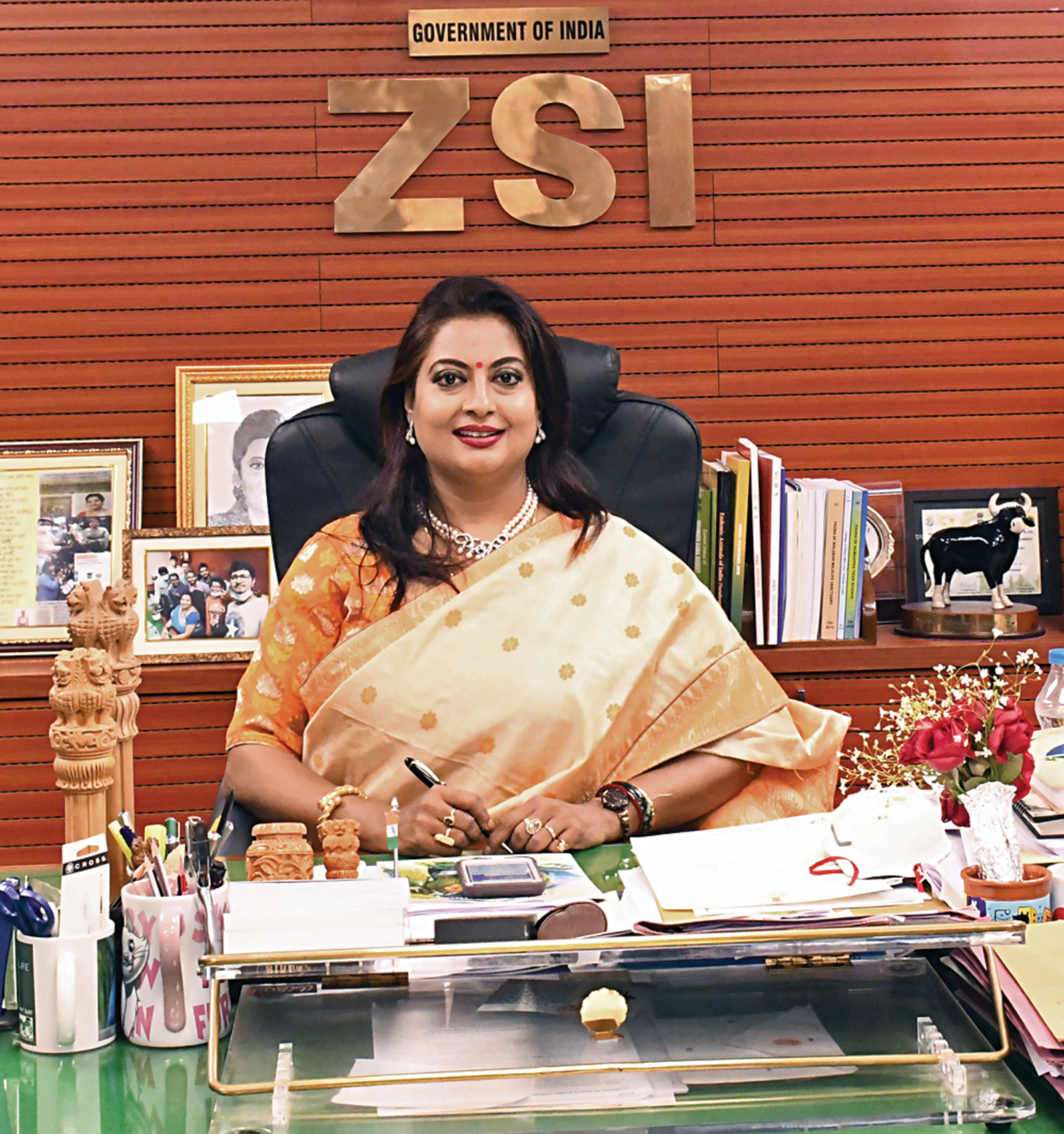
In becoming the first woman Director of the Zoological Society of India (ZSI), Dhriti Banerjee has changed a 105-year long unbroken legacy of only male Directors at the institution. Photo Courtesy: Dhriti Banerjee.
Larvae crawling on dead lab mice was Dhriti Banerjee’s first brush with experimental entomology. In the early days of her doctorate studies on physiological changes caused by drug-inducing analgesia and euphoria, she returned after a weekend to see carcasses crawling with larvae. Enthralled, she preserved the carcasses to track the larva development until they decayed. This was a turning point, which led to her interest in insects and, later, her passionate pursuit of and expertise in the field of forensic entomology in crime detection.
Watching her today, one would assume that her educational path was meticulously planned. A recipient of a Lady Brabourne College Medal for scoring the highest marks in Biology in Grade 12, she pondered over whether Zoology or Botany would be her calling. An avid painter and sketcher, she would often spend hours drawing detailed biology diagrams for her aunt and cousins (and now does the same for her daughter). Choosing to study Zoology for her undergraduate studies at Presidency College, Kolkata, seemed like a natural progression. “I was a good student, and sailed through graduation, post-graduation and my Ph.D. with scholarships and fellowships throughout. I was the first CSIR-funded research fellow in the Zoology Department of Presidency College,” she says.
“Where the mind is without fear, and the head is held high…” Rabindranath Tagore’s writings shaped Banerjee’s childhood. Raised to be fearless and upright early in life, an only child of doting but strict parents, her sense of curiosity for “growing stuff” was fed by her father Kalidas. She grew up in awe of her father, who she confesses was the primary influence in her life and from whom she learnt to simplify and find solutions to complicated problems. She emulated his cool composure in the face of all odds and her mother Chhaya’s resilience and versatility in attending to the needs of a large joint family. This, she says, prepared her to handle an organisation as large and as expansive as the Zoological Survey of India (ZSI) today.
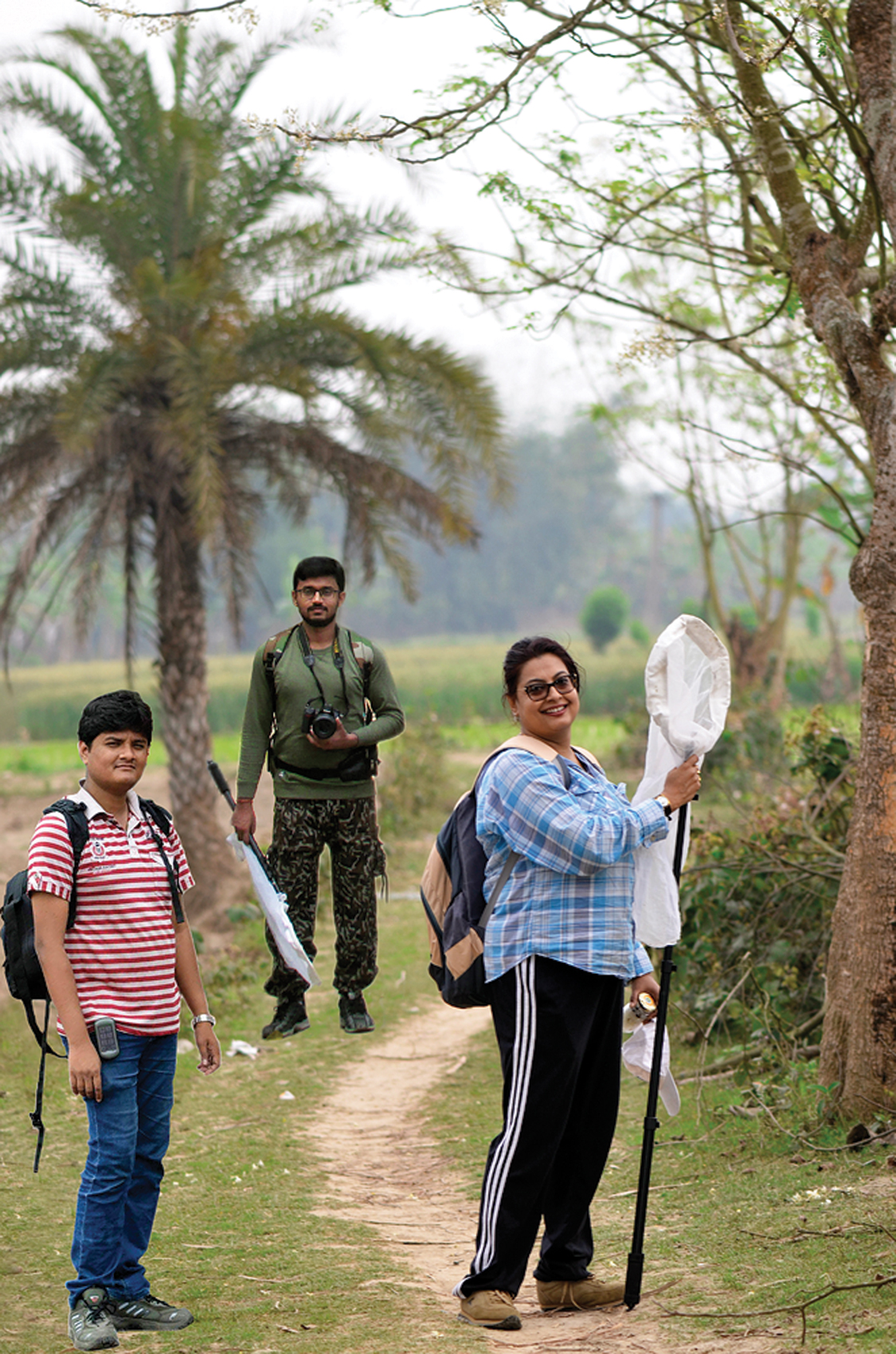
Dhriti Banerjee assesses canopy access to sweep for insects at Birbhum, West Bengal, with ZSI colleagues Siddharth Singh and Surajit Hazra. Photo Courtesy: Dhriti Banerjee.
Early days at ZSI
After joining ZSI as a junior scientist in 1998, Dhriti often found herself to be the only female member of field survey teams that frequently travelled to distant areas across the country. “The journey to the field and subsequent camp shifting were tortuous. For our faunal surveys in Arunachal Pradesh, I remember travelling from Kolkata to Bhalukpong for two days, reaching late evening and finding that the circuit house, which we had tried to pre-book, had not received our official letter regarding our arrival and had been booked for some high-level meeting. Our team would have to settle in the chowkidar’s room for the night. As the only woman on the team, I would be shunted out with a primary school teacher to some haunted cottage downhill. It was a terrifying experience since there was no mode of contact possible. No mobiles, no telephones. Even my team worried about my well-being. However, the next morning, the view from the circuit house would make it all worthwhile. I later learned that the movie Koyla, starring Sharukh Khan and Madhuri Dixit was shot here, a fact that elicited much excitement from my city friends. That kind of compensated for the fieldwork, I guess,” she recollects.
Field surveys were only part of the struggle. When she joined ZSI, she did not even have assigned seating. It took six weeks to get a free working table to start her work. “I was used to this. My Ph.D. research had also started off on the same note with me needing to beg for new lab equipment from seniors and other institutions. A poor lab setup and low infrastructure were my constant companions,” Banerjee says wryly. “In 2010 when ZSI received a special grant of 25 crores for infrastructure, I was beyond thrilled and poured my blood and sweat into ensuring it was seamlessly and effectively used. That was the beginning of the ZSI we see today.”
It’s been a meteoric career. Banerjee moved through the echelons of ZSI to become its first woman Director in 2021. “Though ZSI was way ahead of its time, appointing the first female scientist in a survey department back in 1949, it was unfortunate that the first woman to be appointed as Director took 105 years,” she says. “However, this happened in our country’s 75th year of Independence and I firmly believe that there will be many more such broken glass ceilings before we reach the 100th year of Independence.” While Banerjee is delighted that girls are performing well academically in competitive exams and universities, and choosing to enroll in biological sciences, she wants to see more girls choosing STEM subjects and careers in math and engineering too. “There is still a fear to take on those educational streams,” she says. Equally important, she says, is support from families and organisations. “The lack of women in upper and mid-management levels can only be overcome by a greater women-friendly environment for research, careers with flexible options, supportive maternity and paternity leave and an effective sexual harassment mitigation process. Identifying and training women at a young age and grooming them will lead to more women in leadership positions. Otherwise, female talent will remain grossly underused.”
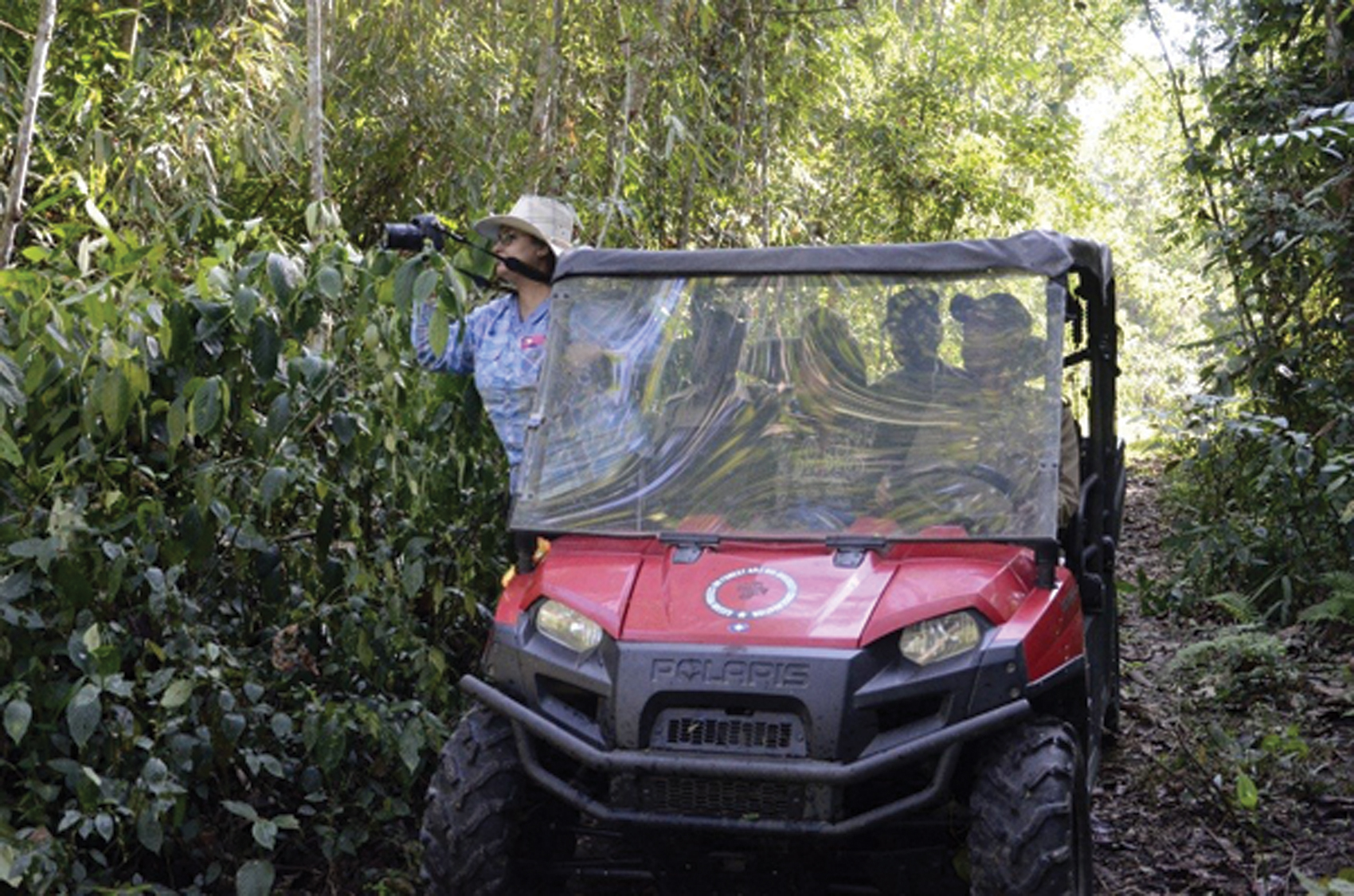
Dhriti Banerjee recording birds in the Dehing-Patkai National Park, Assam, along with forest officials and team members of ZSI. In the 90s and early 2000s, she often found herself to be the only female member of field survey teams. Photo Courtesy: Dhriti Banerjee.
Though young women in biology outnumber men, tend to have higher grades, are more devoted and sincere about their curriculum, they meet with more resistance and more isolation once they get into their research institution and workplace. “Women face multiple obstacles when it comes to the advancement of their careers. Women are often typecast in feminine roles and lab-based jobs, especially in the field of natural sciences,” says Banerjee who was often directed to soft work like planning events, organising lunches and clean-ups even while she was the Head of Office. “I succeeded because I found a way to balance the contradiction of the so-called ‘masculinity’ of my position and the ‘femininity’ of my being, without getting caught in a double bind.”
She was also lucky, she confesses, crediting her parents, husband and in-laws, who stayed rock-solid in their support. “My family, one of the oldest in Kolkata, celebrates elaborate rituals from Durga Puja to Doljatra, which I organise and execute with meticulous attention to detail. It was possible for me to multitask balancing work and family only because of their support. I was the weird daughter-in-law who was a cross between a college lecturer, scientist and a Discovery Channel explorer. My in-laws and mother helped me raise my daughter Roinee, who is now my biggest cheerleader and believes that I can make it big. For my husband Sughran, anything I chose to do was always right. My success is not just mine. I owe it to my family, close friends, former Directors, and senior scientists of ZSI, who always encouraged me to work hard – and silently, even when the wind was not in my sails. They taught me to be resolute and wait patiently for the wind to change course. I feel blessed to have these people as my mentors and supporters. They not only pushed me to move forward but also pulled me up in the face of great adversities.” My junior colleagues from ZSI Kolkata’s Diptera Section – Atanu Naskar, Jayita Sengupta, Siddharth Singh, Mousumi Chowdhury, Surajit Hazra, and Panchanan Parui (who is now retired) never let me give up.
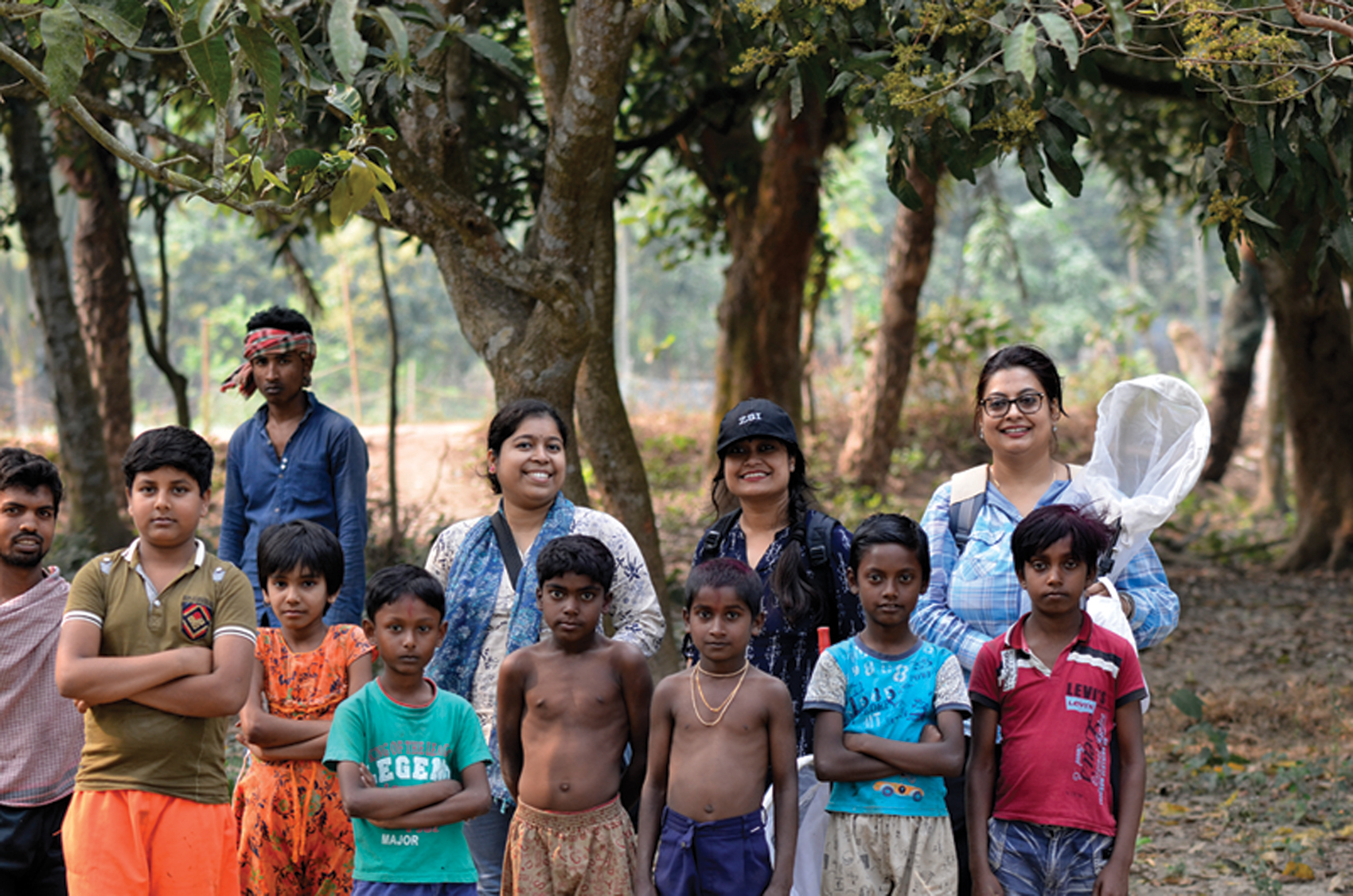
While assessing insect pollinators in Islampur village in Murshidabad, West Bengal, with ZSI colleagues Mousumi Chowdhury and Jayita Sengupta, Banerjee was joined by enthusiastic kids – Sona, Pute, Ismail, Jamal and Jhilli – who climbed the litchi and mango trees to collect pollinators. Photo Courtesy: Dhriti Banerjee.
Banerjee adds, “The beginning must be on a very sound footing. I was a good student throughout. I worked hard, and received several scholarships, fellowships and awards during my academic career. My foundation was solid enough to help me surge forward even when the hurdles looked unsurmountable.” Banerjee is not averse to confessing that she sought professional help and coaching for grooming herself for the post of Director, ZSI. “Women need to keep themselves focused at work and streamline their diversions through a strong support system, which they should build for themselves. This happens easily since women are usually empathetic and empathy goes a long way in building relationships and augmenting support.”
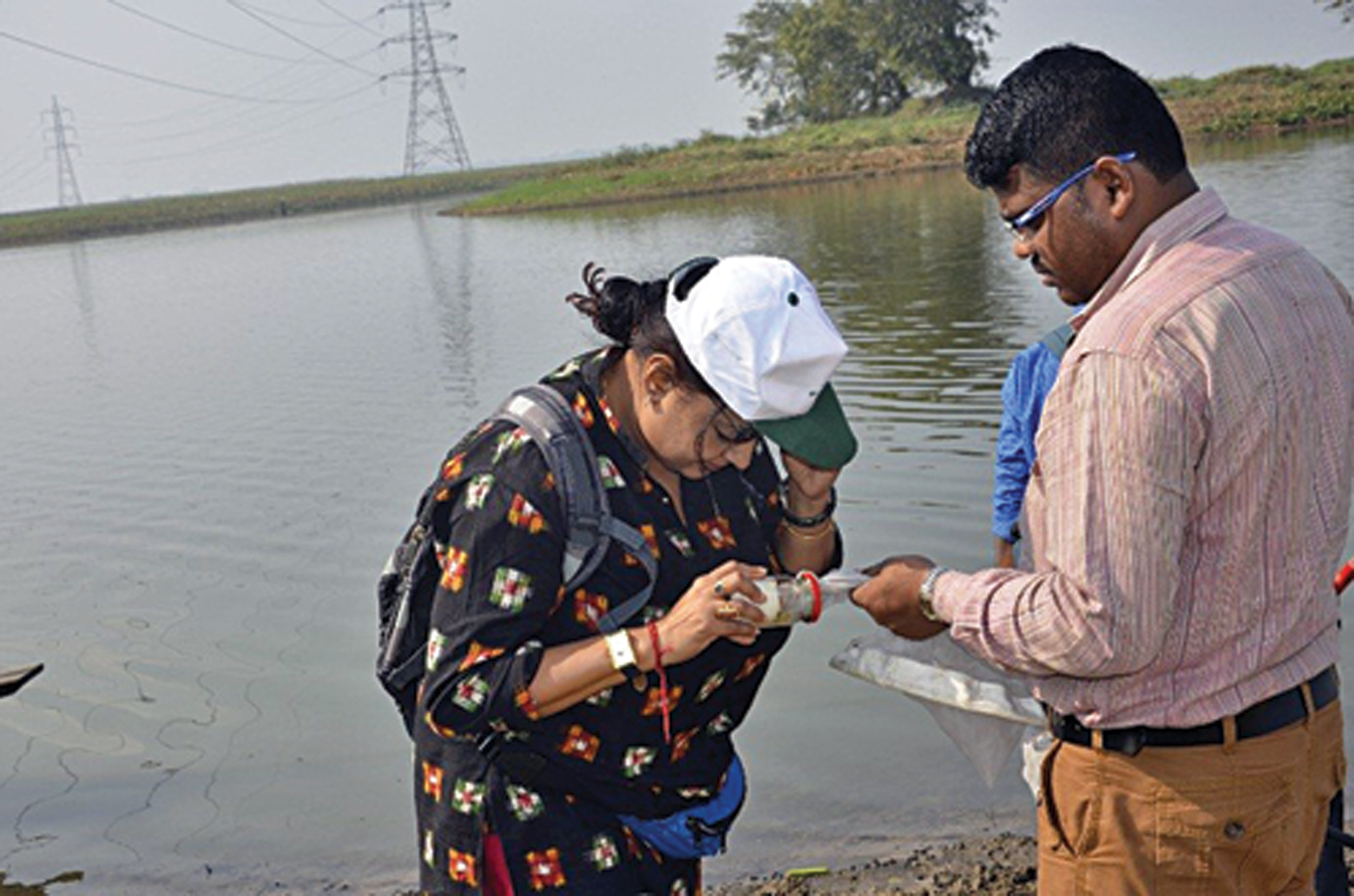
Banerjee and ZSI colleague Atanu Naskar take a closer look at aquatic insects on the banks of the Beas river in Kullu, Himachal Pradesh. Photo Courtesy: Dhriti Banerjee.
Taking ZSI forward
Banerjee is currently focussed on speeding up ZSI’s digital conversion and on her vision of providing a consolidated information base about the country’s faunal diversity, including rare, endangered and threatened species. “I intend to complete the documentation of faunal diversity of states, Union Territories, biogeographic zones, major ecosystems and Protected Areas. In the next few years, I also intend to have museums and National Repositories catering to the different ecoregions of India and as a part of our outreach and data dissemination, activities at all the regional centres of ZSI. The organisation is already a force to reckon with in wildlife crime control detection and I intend to develop at least two state-of-the-art laboratories at Port Blair and Kolkata to aid the WCCB.”
ZSI’s faunal information system will be the ultimate web-based infosystem for dissemination of data on the faunal diversity of India. It will provide digital images of the National Zoological Collection, geospatial information about the fauna of India, and also host the maximum number of DNA sequences of Indian fauna. It is an ambitious project aiming to provide information on Indian fauna, from scientists in the laboratory to workers in the field. This would also be the primary information provider to policymakers, managers and conservationists of Indian wildlife.
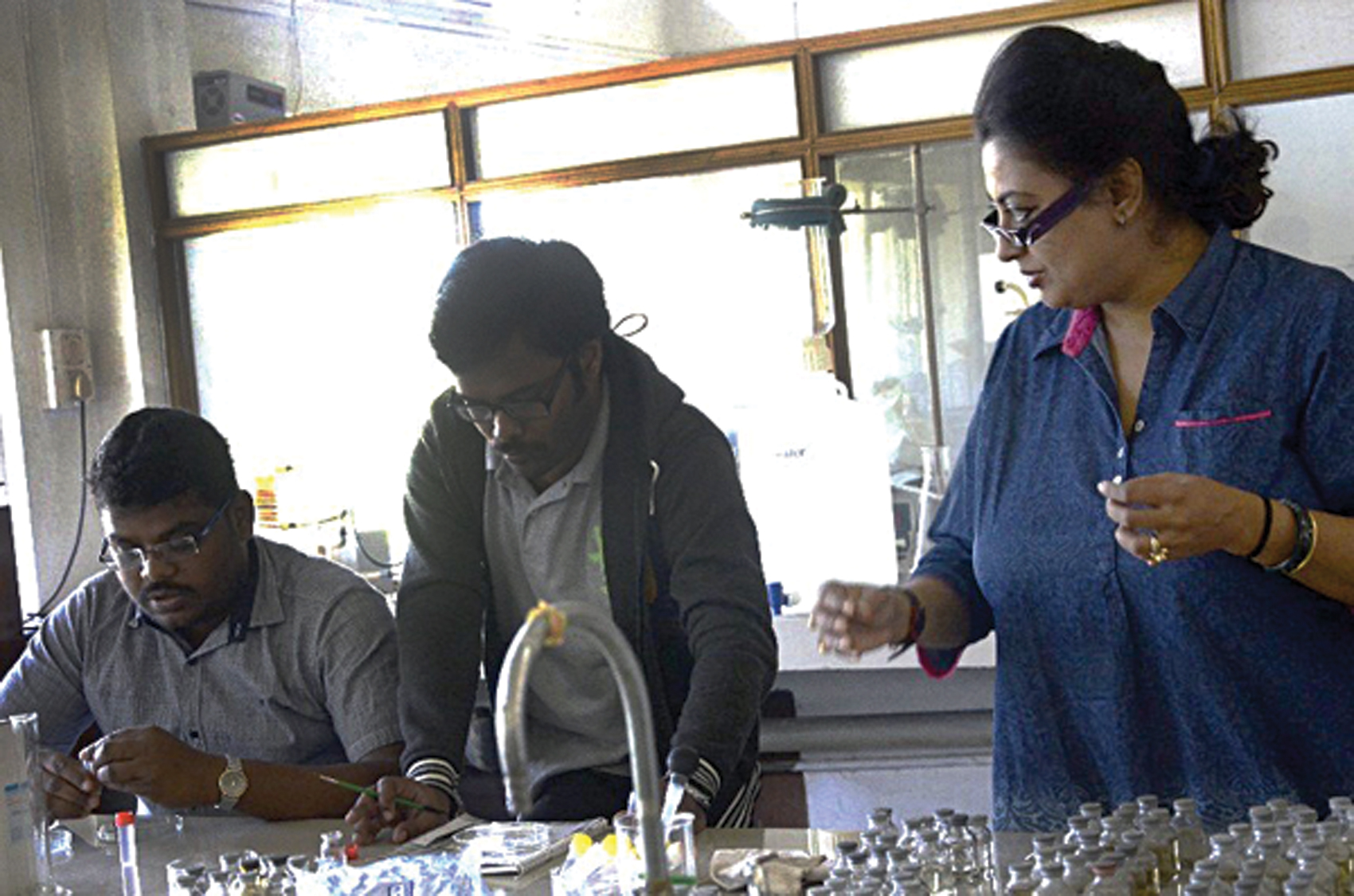
Banerjee examining tea pests at the Tea Research Institute Museum at Toklai, Jorhat in Assam with colleague Aniruddha Maity. Photo Courtesy: Dhriti Banerjee.
Banerjee’s dream is that the ZSI of tomorrow will be an organisation that will be called upon to provide primary, secondary and tertiary information regarding India’s faunal diversity and be an incredible resource to students, scientific researchers, wildlife enthusiasts, wildlife crime control, conservation managers and policymakers at the national and global levels. “Access to information to those interested in biodiversity research management and conservation is our future goal. Training extensions and outreach will be our major thrust for spreading awareness of biodiversity conservation. Our target is the youth of tomorrow, to rekindle their inquisitiveness, scientific spirit and infuse in them the importance of conservation of the beautiful and vast diversity of our mega-diverse country,” she says. She also hopes that with the infusion of newer technologies, ZSI will lead with newer discoveries and records in the years to come. “In the future, Artificial Intelligence-based systems of identification can be used and mobilised by anyone with access to a computer.”
Awards Conferred on Dhriti Banjerjee
R. K. Sur Memorial Award by the Zoological Society, 1996
Women of Excellence Awards, 2018, by Women’s Economic Forum
Amazing Godavari Award for Excellence in Science, Education and Research, January 2022 by ESW, Khajuraho .
Naari Shakti Samman by SBSRD, Prayagraaj in March 2022
Prof. H. R. Mehra Gold Medal and Citation,March 2022, by the Helminthological Society of India
Felicitation by Bharat Chamber of Commerce as 'Outstanding Woman Achiever' March 2022
The sky is the limit
Coming back to the subject of women in leadership roles, Banerjee says the biggest challenge of being a woman is getting your voice heard, as however much you shout, it more often than not gets drowned. “A big shout-out to all the ladies who can holler,” she says, advising women to find the right mentors. “The challenge for ambitious women is to gain acceptance and respect among peers. This can be achieved by mentorship, which is key to putting more women in leadership positions. Women in leadership like me already tend to mentor other women but to find parity in the senior ranks, we also need more men to spend time and energy to promote more women along their career paths and into the rank of leadership. Of course, at the end of the day, women must advocate for themselves to ensure a flow in the pipeline and a smoother pathway to the top.”
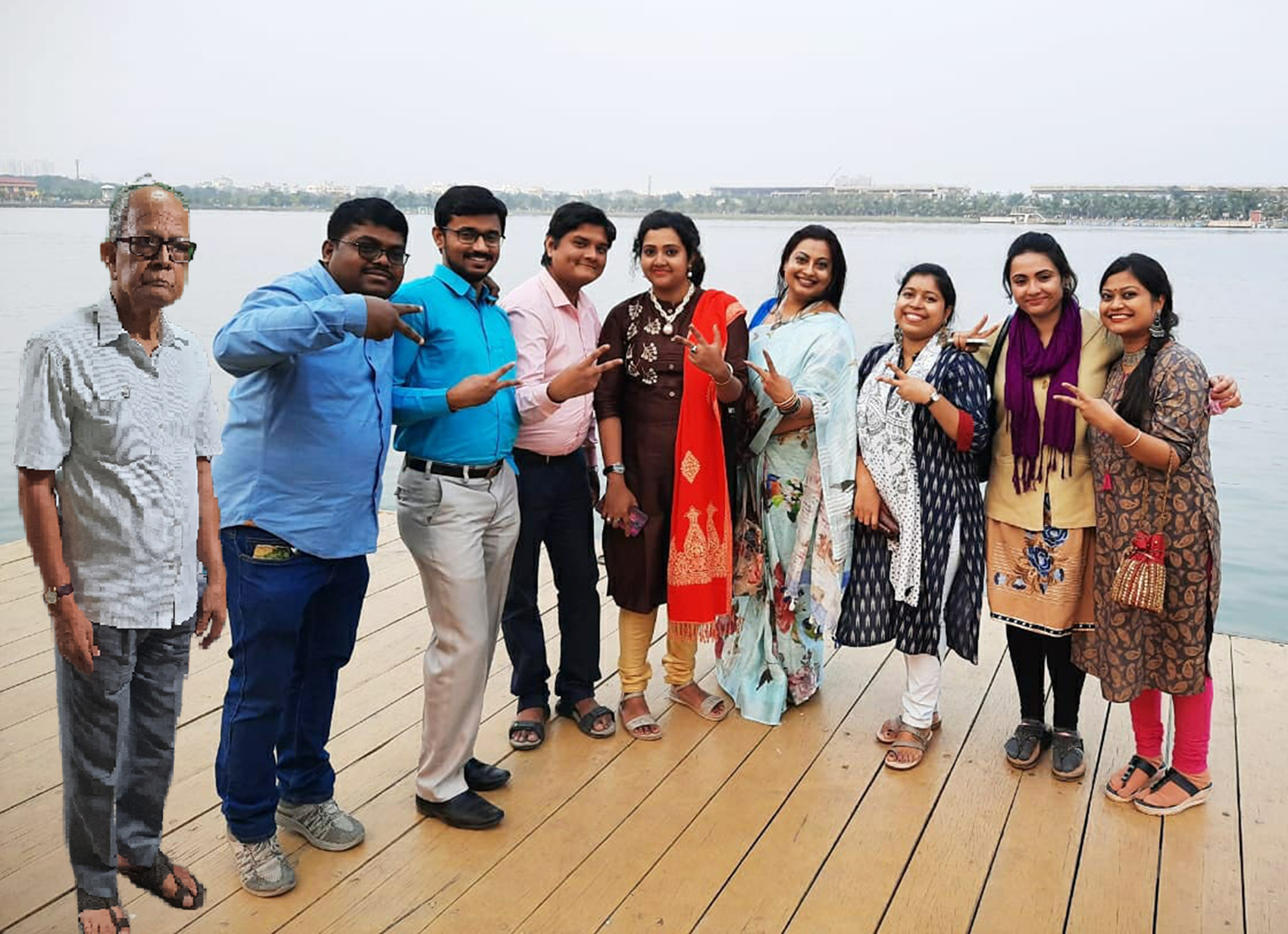
Dhriti with her closest ZSI colleagues Parui Sir, Atanu, Siddharth, Surajit, Emon, Mousumi, Garima and Jayita, whom she has lovingly named Team Diptera. Photo Courtesy: Dhriti Banerjee.
Ultimately, as more women are going out into the field – as many as women in the lab – it will make everybody sit up and take notice, she says, adding with a smile that “Through hard work, grit discipline, confidence and self-belief, the saree will soar higher than the shirt.”








